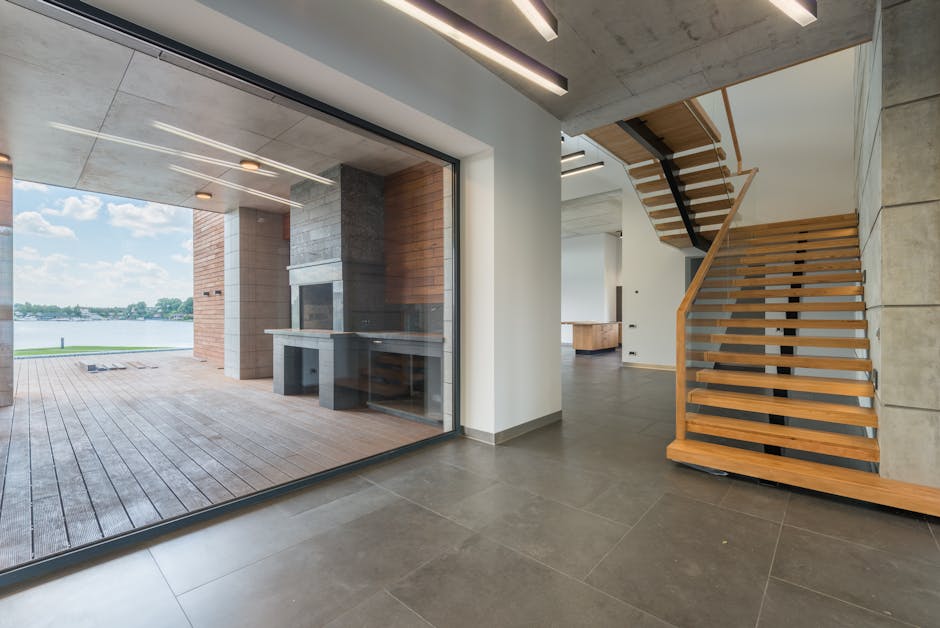Creating Cohesive Indoor and Outdoor Spaces with Minimalist Modern Design Continuity
Introduction
In today’s design landscape, homeowners are increasingly seeking a seamless transition between their indoor and outdoor living spaces. Minimalist modern design offers a perfect solution, providing a clean, uncluttered aesthetic that can be effortlessly extended beyond the walls of your home. This article explores how to create cohesive indoor and outdoor spaces with minimalist modern design continuity, enhancing both the visual appeal and functionality of your property. We’ll delve into key elements like material selection, color palettes, furniture choices, and landscaping techniques to achieve a harmonious blend.
Achieving Minimalist Modern Cohesion
Color Palette Consistency
A unified color palette is crucial for establishing visual flow between indoor and outdoor areas. Consider these approaches:
- Neutral Foundations: Opt for a base of neutral colors like whites, grays, beiges, or soft earth tones for walls, flooring, and large furniture pieces. These serve as a calming backdrop and allow pops of color to stand out.
- Echoing Accents: Repeat accent colors used indoors in your outdoor space. For instance, if you have blue cushions in your living room, incorporate blue planters or outdoor pillows.
- Nature-Inspired Hues: Draw inspiration from the surrounding environment. Integrate greens, browns, and blues found in your garden into your interior design to blur the lines between indoors and out.
Material Harmony
Selecting materials that complement each other is essential for creating a cohesive feel. Think about:
- Durable & Weather-Resistant Options: Extend interior flooring materials, such as porcelain tiles or polished concrete, to your patio or deck. Choose outdoor-rated materials that mimic the look and feel of indoor surfaces.
- Matching Wood Tones: If you have wooden flooring or furniture indoors, select similar wood tones for outdoor decking, furniture, or fencing. Teak, cedar, and Ipe are excellent weather-resistant choices.
- Metal Accents: Use the same metal finishes (e.g., brushed nickel, black matte) for lighting fixtures, furniture frames, and hardware both inside and outside your home.
Furniture Flow and Functionality
Carefully selected furniture can greatly contribute to a seamless transition:
- Choose Durable, Style-Consistent Furniture: Select minimalist outdoor furniture that mirrors the style of your interior pieces. Look for clean lines, simple silhouettes, and durable, weather-resistant materials.
- Consider Multi-Functional Pieces: Outdoor furniture that can easily be moved or repurposed is ideal. Think of ottomans that can serve as seating or side tables, or benches with built-in storage.
- Extend Indoor Comfort Outdoors: Bring the comfort of your indoor living room to your outdoor space with comfortable seating, plush cushions (using outdoor fabrics), and outdoor rugs.
Landscaping as an Extension of Interior Design
Landscaping plays a critical role in creating a cohesive indoor-outdoor space:
- Minimalist Landscaping Principles: Embrace the core tenets of minimalist design in your landscaping, focusing on clean lines, geometric shapes, and a limited plant palette.
- Creating Focal Points: Use strategically placed plants, water features, or sculptures to draw the eye and create visual interest.
- Hardscaping Harmony: Integrate hardscaping elements like walkways, patios, and retaining walls that complement the architectural style of your home. Use materials that echo those used in the interior.
- Green Walls and Vertical Gardens: Consider adding a green wall or vertical garden to blur the boundaries between interior and exterior.
Lighting Integration
Effective lighting is key to creating a welcoming and cohesive atmosphere, both day and night:
- Layered Lighting: Incorporate a mix of ambient, task, and accent lighting to create a warm and inviting atmosphere.
- Consistent Fixture Styles: Use similar lighting fixture styles both indoors and outdoors, such as sleek, modern sconces or recessed lighting.
- Smart Lighting Control: Integrate smart lighting systems that allow you to control both indoor and outdoor lighting from a single device, creating a consistent ambiance.
Conclusion
Creating cohesive indoor and outdoor spaces with minimalist modern design continuity is about more than just aesthetics; it’s about enhancing your lifestyle and creating a seamless flow between your home and the natural world. By focusing on consistent color palettes, material harmony, functional furniture, and thoughtful landscaping, you can transform your living spaces into a unified and inviting oasis. Remember to prioritize simplicity, functionality, and quality in all your design choices to achieve a truly harmonious blend of indoor and outdoor living.














Post Comment